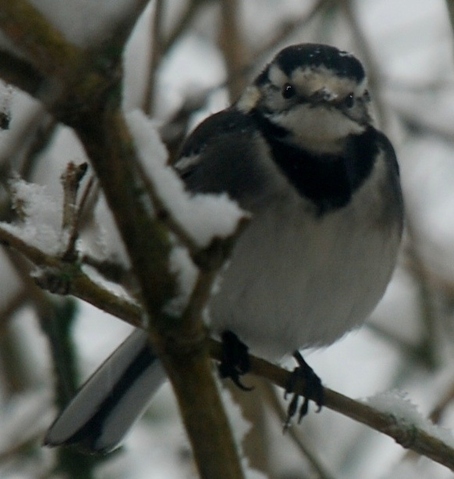Tess discovered and quickly drew my attention to this very confused and fearful Rabbit. Completely blind and unable to scent, it was obviously in excruciating pain, but then, that’s pretty much par for the course for any Rabbit suffering from myxomatosis. I decided, by the way, to spare you some of the potentially more upsetting shots that I took of the animal. It’s face and genitalia were in the most awful state possible and I’m fully aware that at least a few children visit my websites from time to time.To begin with, the disease normally becomes apparent through the sudden growth of pustulent lumps (myxomata), particularly around the face and ears, together with extreme puffiness around the head, eyes and genitals. It then rapidly progresses to a weeping, open sore form, greatly exacerbated by the animal scratching affected areas of its body and an acute conjunctival deterioration of the eyes leading to total blindness (as in the case above).
Meanwhile. the animal quickly becomes listless, loses its appetite and develops an often severe fever. Secondary bacterial infections occur in most cases, often causing pneumonia and purulent inflammation of the lungs. In typical cases, where the rabbit has absolutely no resistance, death may take place within as little as forty-eight hours, though more usually, the animal will take closer to fourteen days to suffer what is basically, one of the most painful and distressing deaths in the animal kingdom.I was barely six years old by the time myxomatosis had killed more than 90% of Rabbits in this country (having spread to the UK from France two years previously back in the summer of 1953) and one of the first things I remember about my new family was how my Uncle Chris, the gamekeeper, found the whole situation so upsetting (he wasn’t a bit like most of the modern gamekeepers). Virtually nothing was known about the disease back then and he absolutely deplored the awful extended suffering experienced by so many Rabbits. In fact, it became an almost full-time obsession with him to seek them out and put them out of their misery.Naturally, I couldn’t leave this one to suffer either and so I despatched it quickly and humanely. However, there were elements with regard to the suffering of this particular animal which I found slightly suspicious and so Tess and I walked the four or five miles back to the vehicle and then returned as close as possible by road in order to tag and bag the animal prior to sending it off for post mortem. It’s in a special freezer right now that I have in the garage exactly for such purposes and I’ll get the Rabbit sent off on Monday.Sadly, there are still a number of unscrupulous individuals out there who are prepared to deliberately introduce the disease (usually by inoculation) onto their land in an effort to control wayward Rabbit populations, but, apart from the sheer cruelty implicit in such an act, and as Nature is always about balance and connections, there are nearly always hugely negative knock-on effects associated with anything that man attempts to do out of sheer, bloody-minded ignorance as the now almost total myxomatosis-related decline of the Spanish Lynx in Europe bears testament.
Had it not been for Tess sniffing out this desperately poorly individual, I would never have noticed it lying so completely still in the undergrowth just a couple of metres from where I was standing and it would probably have continued to suffer in terrible agony for several more days before finally succumbing to its illness.



